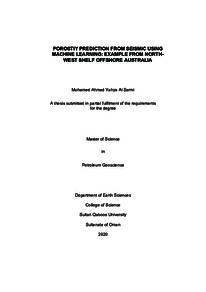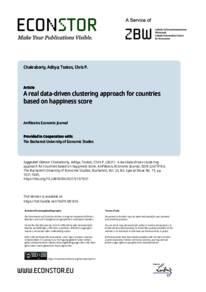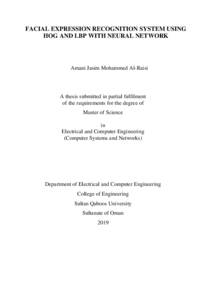Document
Porosity prediction from seismic using machine learning : example from North-West Shelf Offshore Australia.
Identifier
Al-Sarmi, Mohamed Ahmed Yahya (2020). Porosity prediction from seismic using machine learning : example from North-West Shelf Offshore Australia (Master thesis, Sultan Qaboos University, Muscat, Oman).
Publisher
Sultan Qaboos University.
Gregorian
2020
Language
English
Subject
English abstract
Porosity has always been an important parameter for the definition of the
reservoir quality and volumetric. Porosity determination poses many
challenges with an acceptable range of certainty during subsurface reservoir
characterization. The tight deep marine Plover reservoir in Poseidon area from
North Western Australia exhibits a special depositional environment, unique
interior structure and a complex porosity distribution that poses challenges in
predicting reliable reservoir properties. This has large impacts on reserves
and production forecast, and consequently on the economy of a prospect.
The aim of this study is to enhance the characterization of the Poseidon
reservoir using a combination of reservoir geophysics (seismic attributes and
petrophysics) through machine-learning (ML) techniques.
This aim is fulfilled by testing different porosity prediction approaches. These
approaches include Multi-linear Regression (MLR), Probabilistic Neural
Network (PNN) and Deep Feed Forward Neural Network (DFNN). The
approaches have been tested at well location before application to whole data.
The Probabilistic Neural Network showed promising results, far better than
other comparative methods and was able to capture the variations in the
porosity. Apart from PNN, DFNN gave limited success due to the scarcity of
labeled data. Poseidon porosity maps from the PNN revealed geological
information of interest that otherwise are not seen in the seismic inversions or
seismic attribute analysis. PNN porosity results was found more reliable and
can be used as an input to volume and reserve calculation. On average, the
highest porosity zone predicted from the PNN around Plover reservoir is
around 10 – 14 % which correlate with the log derived average (effective)
porosity of 10.8 %.
Member of
Resource URL
Category
Theses and Dissertations



